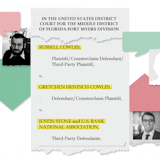Ron Hall owes his life to Mayo Clinic surgeon Gustavo Oderich and a Food and Drug Administration early feasibility study that helps get medical devices to market faster.
In December, the 80-year-old Blue Earth, Minn. man was preparing for a wrist operation when a test showed that the major artery carrying blood through his stomach was at high risk of rupturing.
Hall and his wife first thought of going to the Department of Veterans Affairs for treatment.
"Then my brain clicked on that we were near the Mayo Clinic," said Val Hall, Ron's spouse. "And we got referred there."
Hall became to the first person in the United States to receive an experimental device that shored up a bulge in his abdominal aorta. But what happened to him could only have occurred at a handful of medical facilities across the country.
Those places have government permission to perform early feasibility studies on the TAMBE abdominal aortic stent, a product made by W.L. Gore and Associates that the FDA finds promising, but has not yet judged safe and effective.
Early feasibility studies are reserved "for a small number of high risk patients who don't have a good alternative choice," Oderich explained.
Successful procedure
For Ron Hall, it was a godsend. His abdominal aortic aneurysm was so big doctors said "it could cause me to tip over any minute and die," recalled Hall, a retired structural steelworker and truck driver.



